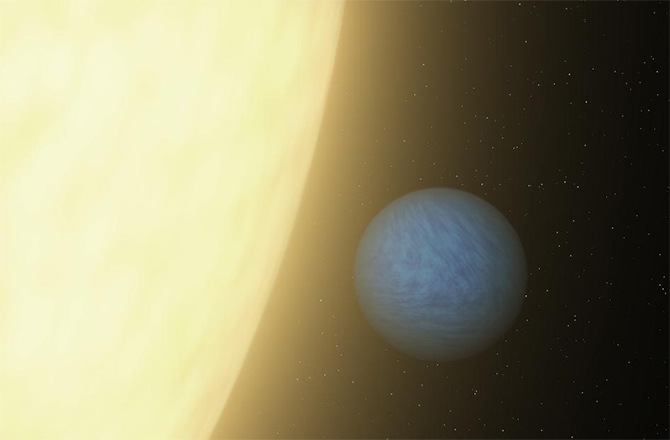Tiny Space Telescope to Aim at 'Super-Earth' Atmospheres

Even with about 2,000 confirmed planets found outside the solar system, we know so little about them. What are they made of? Are their atmospheres habitable? What weather exists?
It will take a whole new generation of "big-eyed" telescopes to learn more, such as the James Webb Space Telescope that launches in 2018. But here's a twist — one European team says it can do exoplanet science for a lot less.
ANALYSIS: 'Habitable' Super-Earth Might Exist After All
With a budget of just 50 million pounds ($79 million), the Twinkle satellite team plans to launch into low-Earth orbit in three to four years if it can get the funding. There, it will study the infrared (heat) signatures of at least 100 nearby worlds a few hundred light-years away. This will be possible even with a tiny mirror of 50 centimeters (20 inches) compared to a larger telescope like Hubble (2.4 meters/8 feet), the lead scientist told Discovery News.
"We have identified a niche of science that could be done very well even with a relatively more modest instrument," said Giovanna Tinetti, an astrophysicist at University College London. Because the planets will be hothouse worlds that are relatively close by Earth, their infrared signatures are so strong that astronomers can infer the presence of molecules, clouds, weather and climate even in a small telescope, she said.
ANALYSIS: Exoplanet Forecast: Cloudy Morning. Outlook: Horrific Heat
While new planets are discovered all the time, one possible target could be 55 Cancri e, she said. It orbits a star much like our sun, but is so close by that its surface burns at a blistering 3,700 degrees Fahrenheit (2,300 Celsius). The planet is so small that it's hard to know much about its structure, but at least one published paper suggests it is rich in carbon — an element associated with life, despite the hostile environment.
Get the Space.com Newsletter
Breaking space news, the latest updates on rocket launches, skywatching events and more!
But money (as always) will be the challenge. Twinkle is much cheaper than a previous planet-studying mission called EChO that Tinetti and collaborators proposed to the European Space Agency in 2011, a half-billion Euro ($0.57 billion) mission that was not selected. Key differences include not sending Twinkle out to Lagrangian point L2 (1.5 million kilometers or 932,000 miles from Earth), a smaller telescope and a narrower wavelength range, using commercial off-the-shelf components, and suggesting "trades" to international scientific organizations such as providing money for telescope time. Funding is ongoing, but there is a commercial partner involved – Surrey Satellite Technology Ltd. – that has participated in numerous space missions.
NEWS: 2 New Exoplanets More Like Earth Than Any Others
While Twinkle is much smaller than other counterparts, its heavyweight contribution will be looking at a range of visible and infrared emissions (0.5 microns to 5 microns) from planets around very bright stars which are not the sweet spot of the James Webb Space Telescope and the Spitzer Space Telescope, Tinetti said. The project is also working to drum up support on the educational side by promoting to K-12 institutions in the United Kingdom.
This article was provided by Discovery News.
Join our Space Forums to keep talking space on the latest missions, night sky and more! And if you have a news tip, correction or comment, let us know at: community@space.com.

Elizabeth Howell (she/her), Ph.D., was a staff writer in the spaceflight channel between 2022 and 2024 specializing in Canadian space news. She was contributing writer for Space.com for 10 years from 2012 to 2024. Elizabeth's reporting includes multiple exclusives with the White House, leading world coverage about a lost-and-found space tomato on the International Space Station, witnessing five human spaceflight launches on two continents, flying parabolic, working inside a spacesuit, and participating in a simulated Mars mission. Her latest book, "Why Am I Taller?" (ECW Press, 2022) is co-written with astronaut Dave Williams.










